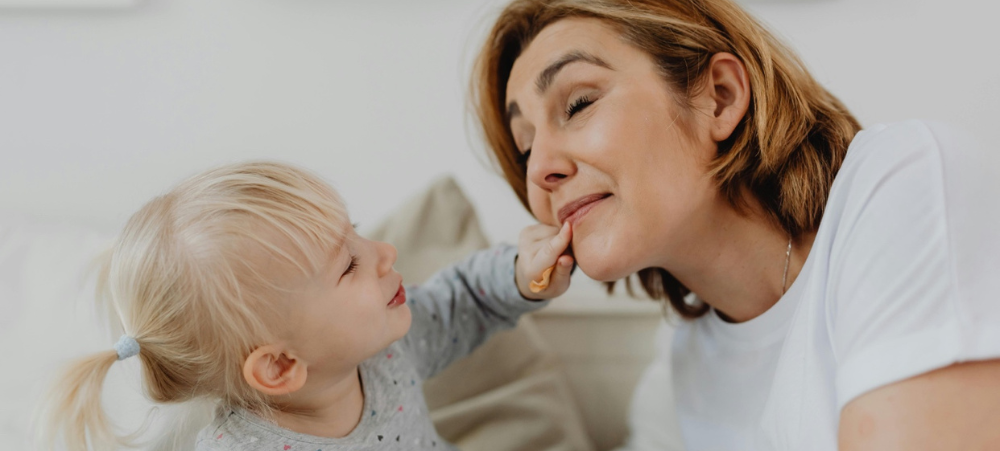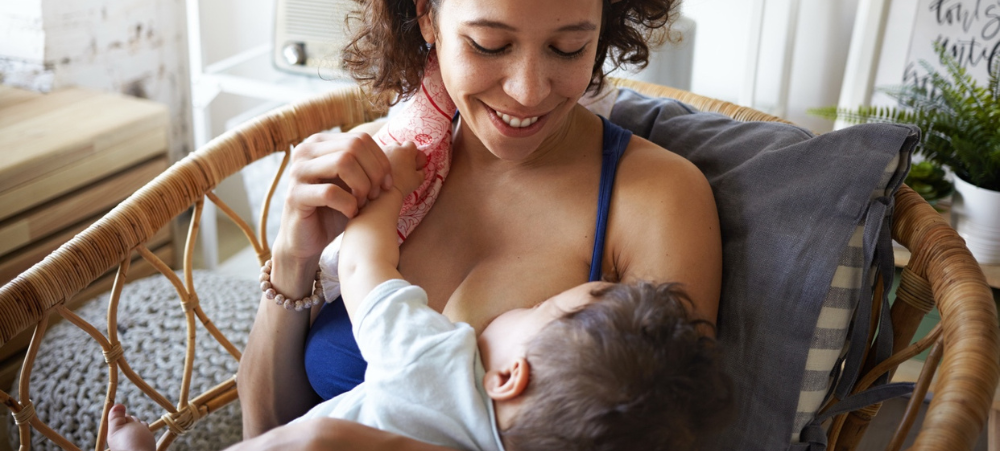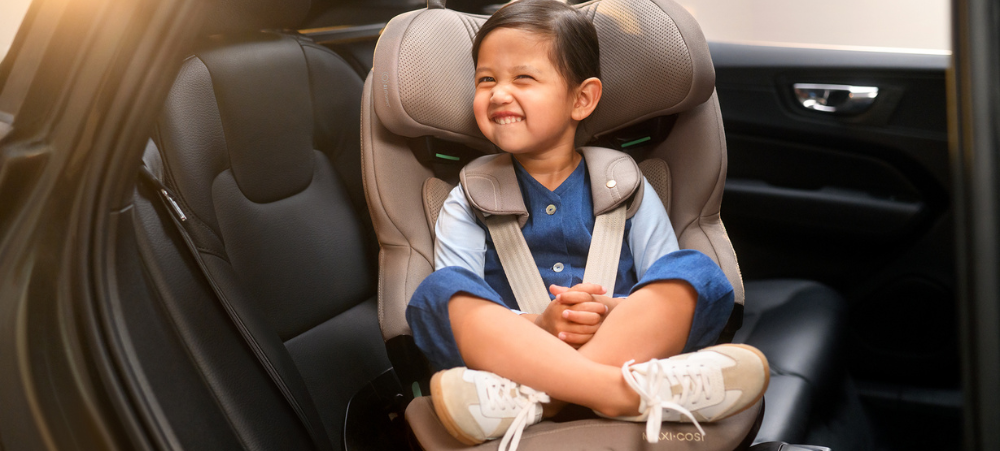What is swaddling?
Swaddling is simply wrapping up your baby gently, so they can’t move their arms. To your baby being swaddled can replicate the feeling they had of being in the womb.

Swaddling gives babies a sense of comfort and security and has been proven to improve the quality of sleep in young babies. It helps to reduce the startle or Moro reflex that can disturb your baby’s sleep.
When swaddling you should only wrap baby’s body and not their neck or head.
Is swaddling safe?
Yes, if you follow safe sleeping and safe and hip friendly swaddling guidance for babies. Safe baby sleeping advice is to always lay your little one down to sleep on their back and avoid front or side positions for sleep, especially if your baby is swaddled.
You should stop swaddling your baby when they show the first signs of rolling over.
How to swaddle your baby safely
The safest way to swaddle is to do it from birth rather than suddenly introduce swaddling at the vulnerable age of 3 months when the SIDS risk is highest.
Use a light cotton material such as a newborn swaddle or swaddle blanket and make sure that the swaddling finishes at shoulder height. Your baby’s head must be uncovered.
Never place your baby on their tummy – especially when they are swaddled.
Use hip-healthy swaddling techniques to that allow your baby’s hips and knees to move freely to reduce the risk of hip dysplasia. Your baby’s legs should be able to fall into a natural position (like frog legs).
Check your baby’s temperature regularly to make sure they don’t get too hot or overheat. Check they’re wearing suitable clothes for the weather too.
Our swaddle sleepwear is specially designed for safe swaddling and is acknowledged as ‘hip healthy’ by the International Hip Dysplasia Institute (IHDI) when used as directed. The design helps to ensure that baby’s legs are in a natural froggy-legged position when sleeping.
Should I swaddle or not swaddle my baby?
Not all babies are swaddled of course, but there are a few circumstances which make it helpful as a settling tool;
When swaddling can be helpful:
If baby is startling themselves awake
You might have noticed as your baby is falling asleep, they suddenly twitch or jerk and wake up. These “sleep starts” or myclonic jerks are perfectly normal but in some babies, they can delay the onset of sleep and make the whole process of drifting off a real struggle. Being swaddled prevents the flailing of your baby’s limbs which tends to wake them up.
Babies who have eczema or other itches
By containing a baby’s hands, swaddling prevents them from scratching or rubbing as they go to sleep and during sleep itself. Lots of babies scratch or rub as they fall asleep, and due to the “itch – scratch – itch” cycle, we know that preventing the scratching will also prevent the itching and will lead to better quality sleep.
Babies who are fretful and unsettled
There are many reasons why some babies are more unsettled than others – discomfort and hunger are the most obvious, but sometimes, they just want a cuddle. It would be lovely if they could be held all day and night, but there are times when you have to put them down and swaddling will help to give them a feeling of security.
The Tommee Tippee easy swaddle is designed to ensure that baby’s legs are in a natural frog-legged position that is important for correct hip development. There are no for poppers, Velcro or ties. Just enough fabric to keep your baby snug, but not so much that they get too hot.

When is it time to stop swaddling?
Every baby is different and there is no set time when you should stop swaddling. Many babies enjoy being swaddled for several months whilst others will become frustrated by their restricted movement from as early as 2-3 months.
The most important factor to consider is safety and your baby’s movement. Swaddled babies should not sleep on their front, so when your baby is able to roll onto their front, you should think about stopping swaddling. You should be especially cautious when they are not yet able to roll back onto their back.
The best way to transition baby out of a swaddle
Your baby might struggle to go to sleep when you get first rid of the swaddle. It will feel strange to them if they are used to falling asleep easily with it on. Indeed, you may have even noticed them becoming sleepy as soon see their swaddling cloth.
The main key to helping your baby sleep without a swaddle is not to allow swaddling to become your baby’s only sleep trigger. From an early age, you should introduce some other sleep signifiers at bed time which will still let them know that sleepy time is coming and will help them to settle even though the swaddle has gone. These sleep triggers should include:
- A similar bed time routine using familiar phrases /songs etc
- A nightly bath
- Milk feed – with a dim light on to prevent your baby from falling asleep over the feed

- Goodnight song or story – same one each night
- Into the cot awake but sleepy, to settle for the night
For a few days before planning to remove the swaddle completely, you should stop swaddling your baby’s arms and just wrap their legs and body up to chest height. At the same time, you should gradually loosen the tension of the swaddling.
Our Grobag Snuggle features special poppers on the arms so you can wrap baby arms in for a safe and snug swaddle or arms out as they transition to a baby sleep bag.
If you feel that your baby misses the feeling of pressure from the swaddle, you place your arm gently across their upper body. As they start to settle, you can then take your arm away.
And although it is possible that you might have a night or two of less settled sleep, your baby will soon get used the change.
Resource : Emma O’Callaghan is a qualified midwife, nurse and infant and child sleep consultant. With over 20 years’ experience in both hospital and community settings, Emma knows about sleep. She has helped thousands of families reclaim sleep and is particularly passionate about supporting new and first-time parents. She is the Founder of Baby Sleep Expert, and with a common sense, compassionate approach is often referred to as the ultimate “baby whisperer”. Emma lives in Melbourne with her three daughters and fur baby.
- How do I store my Breastmilk - November 13, 2023
- How to Work Together as a Breastfeeding Team - November 1, 2023
- Pre-Sleep Rituals, Sleep Routines For All Baby Stages - August 30, 2023





